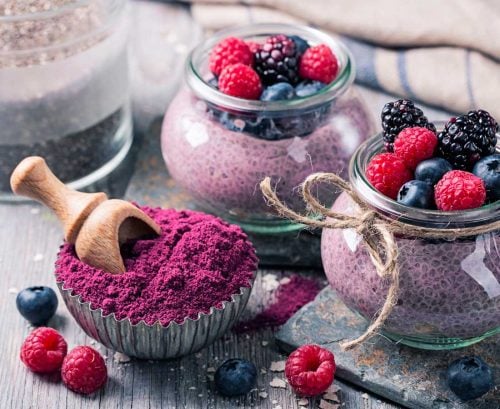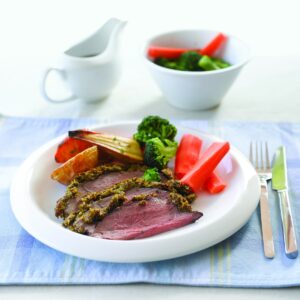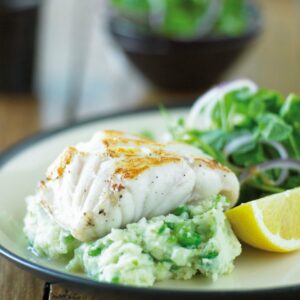
What do turmeric, kale, quinoa, goji berries, blueberries and avos have in common? They’ve all been ‘superfoods‘. But are superfoods real or just clever food marketing? And if so, could the real ones please stand up!
Every year it seems a new ‘miracle food’ is crowned with a health halo and paraded around social media. But do they ever live up to the hype and deliver the benefits, before being nudged aside for the next superfood?
What is a superfood?
Companies these days often use the term ‘superfood’ to sell foods claimed to have exceptional nutrient density: loads of vitamins, minerals and antioxidants, or bursting with a vitamin or nutrient that’s sure to cure-all.
They’re often promoted as a secret weapon to increase longevity, help you lose weight, boost healthy immune function, reduce inflammation, or make your heart healthier. So how do the claims stack up?
Do they exist?
While food is at the core of wellness, no single food is a magic bullet. No one food can provide all the nutrients and energy to nourish you and help you thrive, while protecting you from all the nasty diseases that can bring you down. Importantly, adding in a single food is not going to miraculously fix or undo any diet-related health problem you may have.
Nutritional science looks at one nutrient at a time, but we don’t eat nutrients, we eat food. Focusing on individual nutrients or ingredients trips up a lot of people trying to eat well. This focus often directs them away from buying more fresh produce, and instead encourages them to rely heavily on processed foods which plaster impressive claims over their packaging.
It‘s a good idea to focus more on improving your overall food intake. The Mediterranean diet is a good example of this. It’s possibly the closest thing we have to a dietary magic bullet: it can be extremely appetising, while providing a long list of positive health outcomes.
10 real superfoods
Some foods definitely provide you with more bang for your nutritional buck — and they’re plant foods. This is what most ‘superfoods’ have in common. No expensive superfood is more nutritious than eating a diet abundant in cheaper, easier-to-access vegetables, fruits and legumes — and there’s plenty of research to prove it.
1 Drizzle on extra virgin olive oil
This oil provides a rich source of cancer-fighting polyphenols and high levels of antioxidants which can dampen inflammation and reduce heart disease risk. It stays stable when heated, so make it your main cooking oil as well as the basis for your salad dressings
2 Eat cruciferous veg daily
While all vegies deserve a mention here, the cruciferous family are stand-outs. Cruciferous veg include broccoli, Brussels sprouts, cabbage, cauliflower, kohlrabi, bok choy, radishes, rocket, watercress and turnips.
Cruciferous veg can reduce your cancer risk while providing plenty of folate, vitamins C, E and K, and fibre. They’re also good sources of phytonutrients: plant-based compounds that can lower inflammation and further reduce cancer risk. A cup a day of any of these at lunch and dinner will give a serious boost to your health.
3 Fall in love with legumes
Lentils, beans and chickpeas give you plant-based protein, super-low-GI carbs to sustain energy, and all three types of fibre to reduce bowel, breast and prostate cancer risk. Their fibre feeds your all-important gut microbiome too. Plus, they can reduce your risk of diabetes, heart disease and certain cancers while improving your mood.
If you’re unfamiliar with legumes, use canned ones, or try cooking lentils. No soaking required, and they’ll be ready in 20 minutes. Add to soups, salads, casseroles and pasta sauce, or squash into tasty patties.
4 Satisfy with sardines
Sardines are an excellent source of essential omega-3 fats for heart and brain health and for bone-strengthening calcium — plus they are an inexpensive protein source too. If you don’t fancy sardines, eat salmon, tuna, mackerel, herring or trout a few times a week.
5 Say bonjour to garlic
Garlic’s phytonutrients protect against cell damage and ageing, and have heart-protective properties too. In fact, in large enough quantities, garlic can raise your HDL (good) cholesterol and lower LDL (bad) cholesterol. The World Health Organization recommends a clove a day!
6 Bring on the berries
Blueberries have rightly been in the superfood spotlight due to their powerful antioxidant and anti-inflammatory properties, but blackberries are also an excellent source of these. Include them often as a snack, and add them to breakfast — fresh or frozen.
7 Yes to yoghurt
Yoghurts are a good way to boost both calcium and protein intake, with most containing probiotics, which are active cultures that support a healthy gut and immune system. Eat yoghurt at breakfast, as a snack, or for a healthy dessert.
8 Load up on linseeds
These tiny little seeds pack a mighty punch, with their cancer-preventing phytonutrients, heart-healthy lignans, and essential omega-3 fats for a healthy brain and joints.
9 Nibble on nuts
Any nuts will do, due to their vitamin E and heart-healthy fat content. Eat Brazil nuts for selenium, which can help prevent some cancers, almonds for heart health, and walnuts for their essential omega-3 fats. So, mix ’em up!
10 Know your oats and barley
All whole grains are excellent sources of vitamins, minerals and phytonutrients, but oats and barley top the class. They’re reasonably priced sources of soluble fibre to lower your cholesterol, with resistant starch to promote a super-healthy bowel.
The bottom line
Eating more of these 10 foods will not only give you more years, but also put more life in those years! While fruit and veg provide a long list of health benefits, there isn’t a lot of profit to be made by marketers in promoting them.
For more on superfoods read: ‘Superfoods’ vs everyday heroes
Join Club Med!
A study of 30,000 women found a link between adherence to the Med diet and a lowered risk of heart attacks, strokes, and heart failure. Another study found it helped to lower blood pressure after just 6 months, while a third has linked the diet with reduced risk of certain cancers.
Article sources and references
- arlsen, M & Halvorsen, B et al. 2010. The total antioxidant content of more than 3100 foods, beverages, spices, herbs and supplements used worldwide. Nutr J. 9 (3).https://nutritionj.biomedcentral.com/articles/10.1186/1475-2891-9-3
- Dr Joanna. 2020. Garlic. Accessed Nov 2020.https://drjoanna.com.au/blog/garlic/
- Mintel Group. 2016. Super growth for ‘super’ foods Accessed Nov 2020https://www.mintel.com/press-centre/food-and-drink/super-growth-for-super-foods-new-product-development-shoots-up-202-globally-over-the-past-five-years
- Nielson Global Health and Wellness Report. 2015. We are what we eat. Accessed Nov 2020.https://www.nielsen.com/us/en/insights/report/2015/we-are-what-we-eat/
- U.S. Department of Agriculture, Agricultural Research Service. 2010. Oxygen Radical Absorbance Capacity (ORAC) of Selected Foods, R2https://www.researchgate.net/publication/267379608_Oxygen_Radical_Absorbance_Capacity_ORAC_of_selected_foods
www.healthyfood.com










